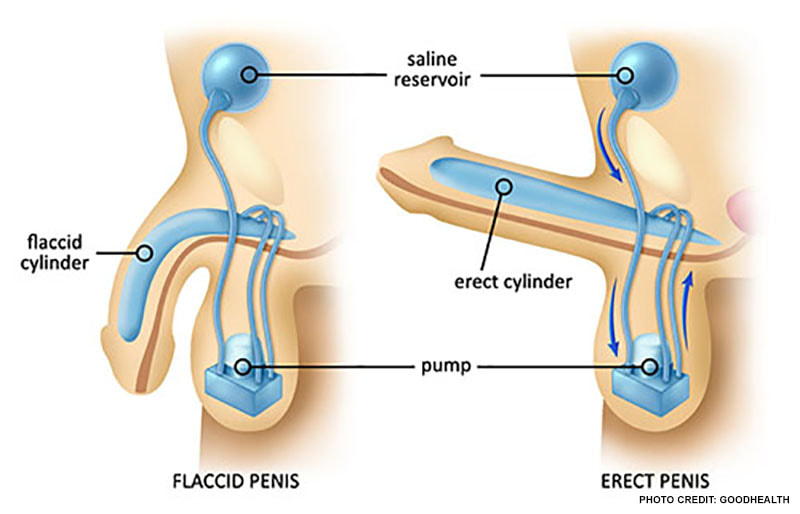Treatment options for erectile dysfunction: Vacuum constriction devices and penile prostheses
There are various effective treatments for erectile dysfunction (ED), including penile prostheses, vacuum constriction devices, implantable devices, and vascular reconstructive surgery.
One of the methods to promote prosthetic erection is through the use of vacuum constriction devices. These devices are non-invasive and consist of a vacuum chamber, pump and constriction ring. The process involves lubricating and loading the ring onto the cylinder base, placing the cylinder over the penis, and activating the pump to pull the constriction band onto the base of the penis. The cylinder is then removed, and the constriction band is left in place for 30 minutes, achieving an erection within two to three minutes. This method has shown close-to-normal results with sufficient rigidity and high satisfaction rates among patients and their partners, especially for older men in long-term relationships. However, it can be cumbersome and may cause purple, cold and numb bruising. Moreover, it may not be suitable for mild ED and is ineffective for severe ED, vascular insufficiency and fibrosis. Another effective treatment for ED is penile prosthesis implantation, which involves the use of either a malleable or inflatable implant. The malleable implant consists of two semi-rigid, bendable rods that can be manipulated to create an erection. It is easier to use, provides constant penile rigidity, and has a lower risk of mechanical failure, making it generally less expensive. The inflatable implant, on the other hand, consists of a pair of cylinders, pump and reservoir. A man can achieve an erection by squeezing the pump located in his scrotum, transferring fluid from the reservoir into the cylinders. This method has a high reliability rate of 97.5% at five years, with a lifetime replacement policy. The resulting erection looks and feels natural, with some partners even unaware that an implant is present. |
- IN THE SPOTLIGHT
-
HEALTH CONDITIONS
- ANTIMICROBIAL RESISTANCE
- ARTHRITIS
- ASTHMA
- BACK PAIN
- BRAIN DISORDERS
- BREAST CANCER
- CANCER
- CARDIOVASCULAR DISEASE
- CERVICAL CANCER
- CORNEAL ULCER
- CORONAVIRUS DISEASE (COVID-19)
- DEMENTIA
- DENGUE
- DENTAL PROBLEMS
- DIABETES
- DRUG ABUSE
- ECZEMA
- ERECTILE DYSFUNCTION
- EYE
- FIBROIDS
- GASTROINTESTINAL DISEASES
- INFLUENZA (FLU)
- HEADACHES & MIGRAINES
- HEPATITIS
- HIV & AIDS
- JOINT PAIN
- KIDNEY DISEASE
- LUNG CANCER
- LUPUS
- MELASMA
- MENTAL HEALTH
- MOUTH-AND-TEETH
- OBESITY
- OSTEOPOROSIS
- POLYCYSTIC OVARY SYNDROME
- POMPE DISEASE
- PSORIASIS
- SEXUAL & REPRODUCTIVE HEALTH
- SKIN
- SLEEP
- STROKE
- DISABILITIES & SPECIAL ABILITIES
- NURSING RESOURCES
- DIGITAL HEALTH
- HEALTH PRODUCTS & SERVICES
- RELATIONSHIPS
- PARENTING
- EMPOWERING WOMEN
- MEN'S WELLNESS
- GOLDEN YEARS
- ACTIVE LIFE HUB
- NUTRITION
- COMPLIMENTARY MEDICINE
- AMBULANCE AND FIRST AID GUIDE
- Community clinics/ Klinik Komuniti
- Government Dental Clinics / Klinik Pergigian Kerajaan
- ABOUT US



